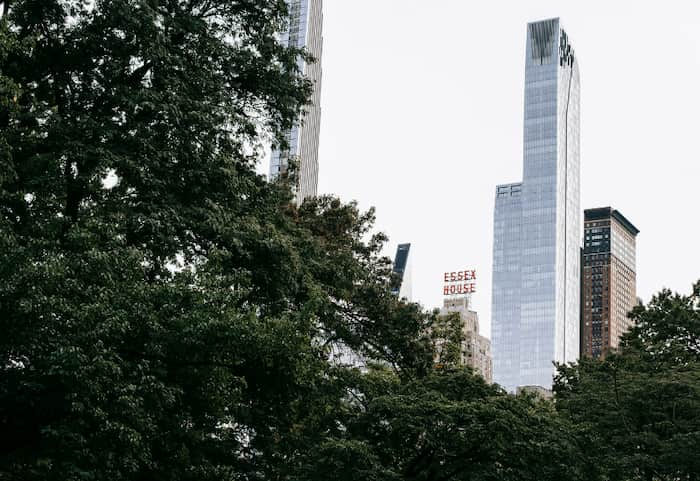Dry summer days are not only stressful for people but also for our trees and plants. Hot temperatures damage different kinds of trees, no matter the age or soil condition. Extreme heat load leads to tree health symptoms and dehydration. During hot summer days, trees lose more water to dissipate heat instead of making food.
Extreme heat and prolonged droughts make trees more susceptible to diseases and pests. As temperatures rise, pay extra attention to your trees and give them more TLC. Early diagnosis and treatment of heat stress can help them stay alive.
What Is Heat Stress in Trees?
In a nutshell, heat stress happens when trees lack water and can’t produce enough food. The heat causes trees to lose as much as 100 gallons of water during the summer months. Drought and lack of irrigation cause the soil to become dry. Not enough moisture in the soil means your trees won’t be able to absorb nutrients from it. As a result, your trees will start to wilt and die.
How Do Trees Stay Cool?
Unlike humans, trees can’t stand in front of a fan or turn on their air conditioning unit to cool themselves. The only way they can dissipate heat is by transpiration.
After absorbing water from the soil, your trees will remove the excess water from their body. The water is spread throughout the tree before it evaporates as water vapor from the surface of the leaves. Transpiration provides a cooling effect and lowers down their temperature by 10 to 15 degrees Celsius.
Since your trees focus on cooling the leaf surface, they are unable to produce more sugars and carbohydrates. This weakens the tree and makes them more susceptible to various issues.
Signs of Heat Stress in Trees
Even healthy and well-watered trees can suffer from heat stress. Many symptoms of heat stress in trees look similar to signs of disease or drought, so take a closer look at your plants and shrubs. Here are some of the most common signs that you need to take note of:
Leaf Rolling
If the leaves of your trees look like green cigars, they might be feeling stressed due to extreme heat. Trees usually roll their leaves to reduce moisture loss. Leaf rolling reflects moisture deficit and extreme temperatures. Aside from this, leaf rolling may be caused by too much nitrogen, sunburn, and pests that feed on sap. Always find the root cause of the leaf rolling to help your trees stay healthy and vigorous.
Yellowing Leaves and Brown Edges
Leaves usually turn brown during the height of summer also known as leaf scorch. When you see the tips turning brown, it means the tree lacks water to replenish the moisture lost in the leaves. The edges of the leaves will start to become brown and move inward.
Blossom and Fruit Drop
The premature drop happens frequently during summer due to high temperatures. Trees with fruits and flowers do this to survive and conserve resources. If you see this occurring, do not panic. Typical production of buds will start again once the temperatures drop.
Sunburn
Humans aren’t the only ones that get sunburned. Excessive exposure to light and heat causes the bark and wood tissues to sustain sunburn injuries. Noticed yellow or brown “burned” areas in your trees? You can solve this problem by providing adequate irrigation water and adding wood chips or organic mulch.
How To Protect Your Trees in the Summer
When summer rolls in, keep a close eye on your trees. Take action immediately if you notice any of these warning signs we’ve mentioned. Here are some recommendations to reduce heat stress and help your trees recover quickly?
Proper Watering
Check the soil around your tree before adding water. You might drown the roots if you’re not following watering guidelines. The key to keeping them hydrated is deep watering. Unlike shallow watering, deep watering is the method that ensures water gets deep enough into the soil. Be sure to water from the drip line and as far as the tree’s canopy. During summer, you may do morning watering so that water won’t evaporate quickly.
Mulching
This method is effective in conserving moisture in the soil and minimizing heat stress. In addition, mulch helps cut down on weeds and prevents soil temperatures from fluctuating. Your trees will be more hydrated when there is no loss of moisture to evaporation.
Say No To Pruning
The removal of branches during summer encourages new growth. A late flush of growth will not mature enough to overcome both sunburn and winter injury in the coming months. You may still prune broken and hanging branches but do it with precaution. Excessive pruning will be the reason why your trees would not be as full as before.
Remove Weeds
You should always pull weeds in your landscape because they steal water and nutrients from the soil. When weeds are abundant, they will start to share the nutrients until your trees get nothing. Getting rid of the competition will ensure a chance of survival for your trees. This is extremely important during the summer months when your trees are not getting as much water.
Consult to Our Tree Experts About Heat Stress
If you’re unsure about detecting and identifying heat stress in your trees, contact our professionals at Midstate Tree Service of Harrisburg for assistance. We will give you a proper diagnosis and advice on how to take care of your trees during summer. Based on the inspection, we can perform professional tree care services. Feel free to request a consultation with our team today!



